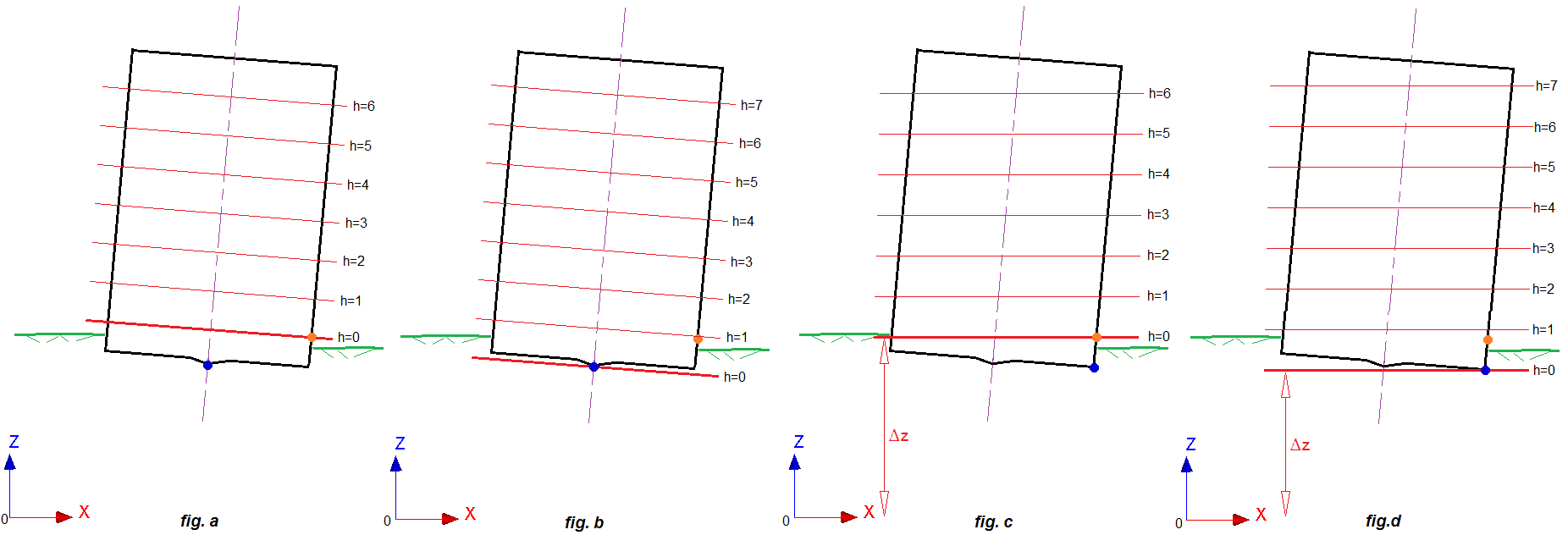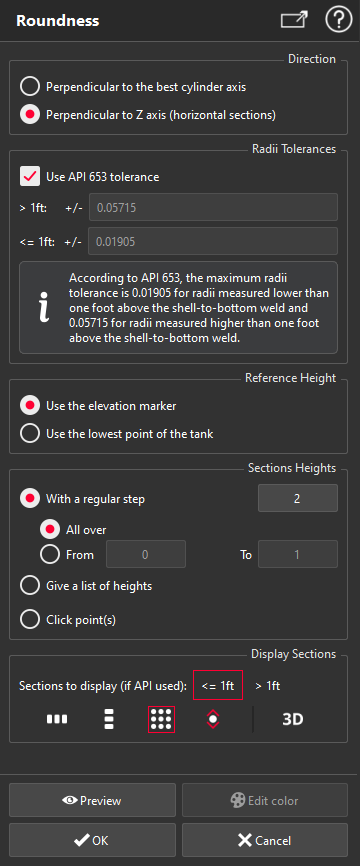Roundness
This command allows you to check the roundness of a tank at different heights. This command creates:
cross sections on the best cylinder
cross sections on the mesh of the tank
inspections between the cross sections on mesh and on best cylinder
The Best Cylinder must be computed before launching this command.
The mesh of the tank defined for the project is used by default. However, it is possible to create sections on any other mesh by selecting it before launching the command. You can, for example, use only the shell of the tank after using the command Separate Shell.
Note
For a given height, a comparison will be computed between sections on the best cylinder and on the tank mesh. The section on Best Cylinder will be considered as the reference. The sections on the mesh will be then colored depending on the deviations found.
|
|
|
Altitude vs Elevation
Keep in mind that altitude and elevation are not the same concept:
altitude refers to the sea level. In the software, the origin point is the origin of the active coordinate system.
elevation refers to the local height. At the beginning of the tank inspection, you compute the best cylinder of your tank and you define two markers (elevation and orientation). That is why, you do not need to define an UCS for each tank. You can, also, work in whatever coordinate system you want.
Thus, each section can be defined by:
its height (elevation) along the tank axis
the coordinates of its intersection with the tank axis (X, Y, Altitude)
The values of altitude and elevation are identical if the tank axis is vertical and if the origin of the active UCS is at the bottom of the tank. So as to draw sections on true altitudes: you have to define the elevation marker on (0, 0, 0) and choose the option Perpendicular to Z axis (horizontal sections), unless you have forced the best cylinder to be vertical.

fig. a: Perpendicular to the best cylinder axis+Elevation marker
fig. b: Perpendicular to the best cylinder axis+The lowest point
fig. c: Perpendicular to the Z-axis+Elevation marker
fig. d: Perpendicular to the Z-axis+The lowest point
Create a report
This command automatically creates reporting data ![]() in your document. This object stores your results so as to create a report later.
in your document. This object stores your results so as to create a report later.
From the treeview click on the magnifier icon![]() to launch the report editor (or launch Report Editor). Then, each object
to launch the report editor (or launch Report Editor). Then, each object ![]() stands for a chapter which can be added to your report.
stands for a chapter which can be added to your report.
Refer to Reporting to learn how to customize your report.
Export CSV
In the report editor, it is possible to view and export as CSV the roundness values for each point of each section. The values are stored so that the first point of each section is located near the oriention marker, and values follow each other in clockwise direction.
